Neves-Corvo Mine, Portugal: Environmental Evaluation
Info: 8914 words (36 pages) Dissertation
Published: 9th Mar 2021
Tagged: Environmental StudiesGeology
Table of Contents
2. Property Description & Location
4. Climate, Local Resources, Infrastructure & Physiography
4.b. Local Resources & Infrastructure
6. Geological Setting & Mineralization
6.c. Overview of the mineralized zones
7. Mineral Resource & Reserve Estimates
9. Environmental, Social & Community Management
List of Figures
Figure 1.1: Neves-Corvo mine, Portugal (EuroZinc, 2018)
Figure 1.2 Neves-Corvo Mine (Google Earth Pro, April 01, 2018)
Figure 2.1 Location of Neves-Corvo, Southern Portugal
Figure 3.1 Location of Licensed Areas
Figure 5.1 History of copper production of Neves-Corvo Mine
Figure 5.2 History of zinc production of Neves-Corvo Mine
Figure 6.1 Location of Neves-Corvo mine within the regional geology
Figure 6.2 Location of Neves-Corvo other VMS Deposits within the IPB
Figure 6.3 Geology of the Neves-Corvo area
Figure 6.4 Stratigraphic Sequence of the Neves-Corvo Mine
Figure 6.5 Location of Mineralised Zones at Neves-Corvo and Semblana
Figure 8.1 Overhand and Underhand drift & fill method
Figure 8.2 Bench & Fill Mining Method (Schematic)
Figure 8.3 Mini Bench & Fill Mining Method (Schematic)
Figure 8.4 Sill Pillar Mining Method (Schematic)
Figure 8.5 Optimized Bench-and-Fill Mining Method
Figure 8.6 Annual Backfill Requirements
Figure 8.7 The ventilation network for Neves-Corvo mine
Figure 10.1 TRIF records of different mines of Lundin Mining
Figure 10.2 LTIF records of different mines of Lundin Mining
Figure 10.3 Types of incidents in Neves-Corvo mine
Figure 11.1 Sensitivity analysis of the ZEP Project
List of Tables
Table 7.1 Total Mineral Resources of Nevs-Corvo
Table 7.2 Estimates of Mineral Reserves of Neves-Corvo
Table 8.1 Backfill Specification by Mining Method
Table 8.2 Ventilation Districts of Neves-Corvo Mine
Table 11.1 Forecasting of the cost of Neves-Corvo operation
Table 11.2 Forecasting of the cost of Neves-Corvo (ZEP) operation
Executive Summary
Neves-Corvo mine in Portugal has been studied thoroughly as a requirement of the graduate course MINE 506. To meet the expectation of the course the author studied the history and development of the mine and analyzed its current situations. The mining methods and associated significant activities with the operation (backfill and ventilation) were studied articulately and presented in this study briefly. A distinct effort has been put to understand how the mine handling the issues regarding environment, social engagement and most importantly how the mine is performing economically. National Instrument 43-101, Environmental Impact Assessment reports of Neves-Corvo along with the Annual Reports and Annual Information Forms from Lundin Mining have been considered as the key sources of information for this study.
- Introduction
The Neves-Corvo is a copper-zinc-silver mine, located approximately 220 kilometers southeast of Lisbon in the Alentejo district of southern Portugal. It is an active base metal production mine. The location of this mine is in a world-class Iberian Pyrite Belt which runs through southern Spain and Portugal. The mine is owned and operated by indirect subsidiaries. Lundin Mining is a spread Canadian base metals mining company with operations in Chile (Candelaria Mining Complex), the United States of America (Eagle Mine) and Sweden (Zinkgruvan Mine). Also, Lundin indirectly holds an equity stake of 24% in the Freeport Cobalt Oy business including a cobalt refinery located in Kokkola, Finland. The Neves-Corvo mine is operated by Sociedade Mineira de Neves-Corvo SA (SOMINCOR) a 100% subsidiary of Lundin Mining.

Figure 1.1: Neves-Corvo mine, Portugal (EuroZinc, 2018)
Neves-Corvo has been established as an underground operation and exploits several polymetallic sulfide orebodies. Since it was opening in 1989, it has been a significant producer of copper and has good connections to the national road network which links the mine with Faro to the South and Lisbon to the North. The mine has a dedicated rail link into the Portuguese rail network and to the port of Setubal. The ore is processed on-site, and tailings are disposed of in the Cerro de Lobo impoundment roughly 3 km from the plant. Rail and road ships concentrate for onward distribution to customers.
There are no significant centers of population close to the mine, although several small villages with populations of hundreds are located within the mining concern. The concern comprises the Neves-Corvo area with 13.5 km2 and the Semblana area, covering the Semblana orebody, with 15.4 km2. The concession provides the rights to exploit the Neves-Corvo deposits for copper, zinc, lead, silver, gold, tin and cobalt for an initial fifty years period (from November 24, 1994) with two additional extensions of twenty years each. The mining concession provides proper surface rights so that it can accommodate the existing mine infrastructure and allow expansion when becomes necessary. (Facts & Description, 2016; Holley, 2017)
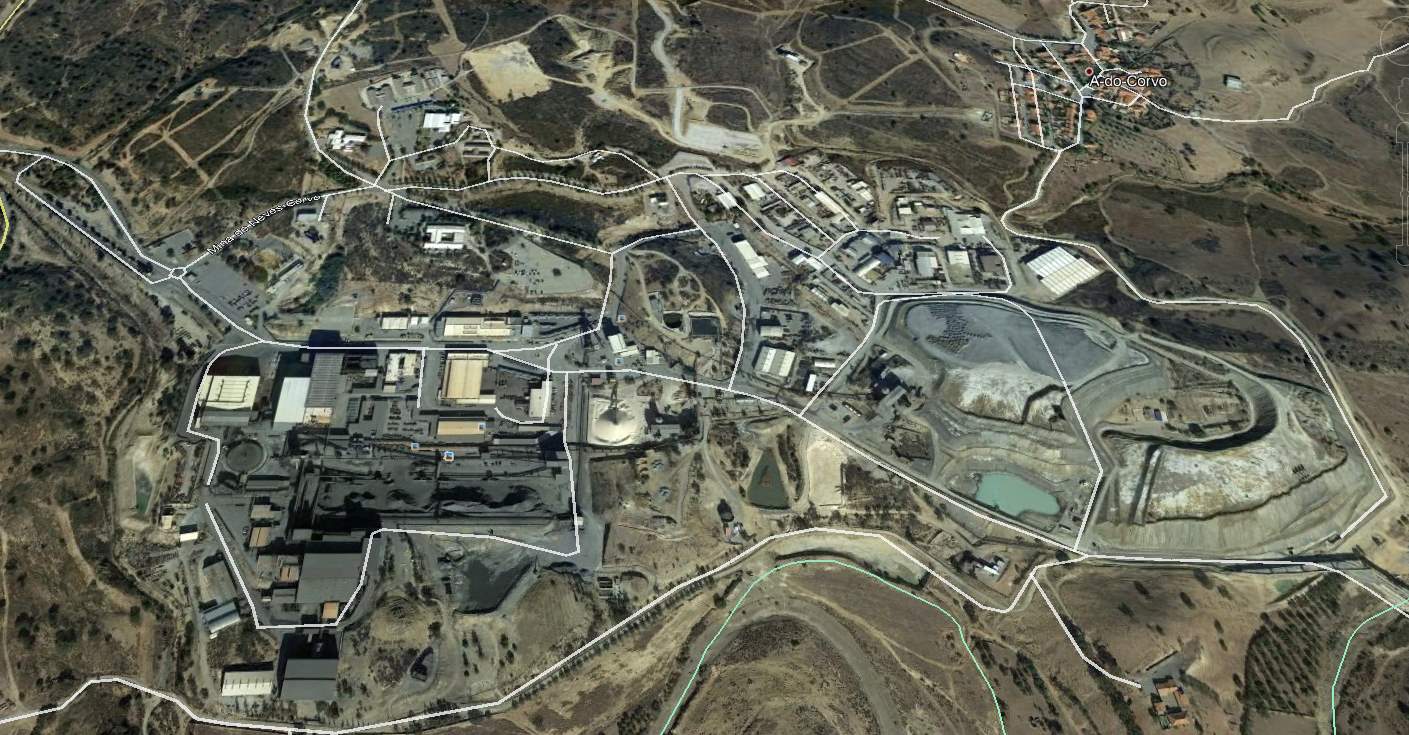
Figure 1.2 Neves-Corvo Mine (Google Earth Pro, April 01, 2018)
- Property Description & Location
The polymetallic base metal deposits of Neves-Corvo are in the Alentejo province of Southern Portugal, some 15km southeast of the town of Castro Verde. The location of the mine is shown in figure 2.1
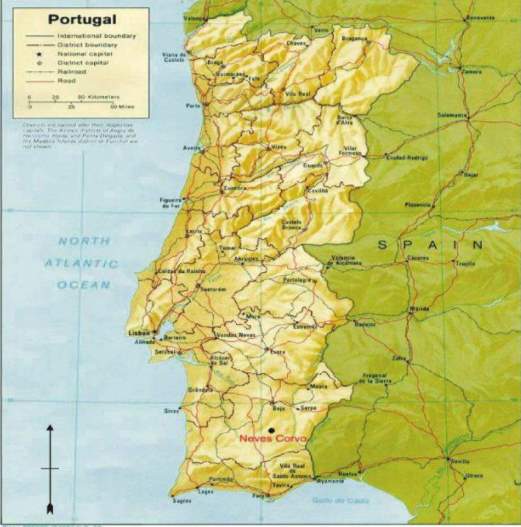
Figure 2.1 Location of Neves-Corvo, Southern Portugal(Wardell Armstrong International Limited, 2007)
Exploiting some polymetallic sulfide orebodies, the mine has been developed as an underground operation. It hoists yearly approximately 3.5 Mt of ore via a 5m diameter shaft from the 700m level. The additional access is provided by declines to the 550m elevation. The elevation rate for the underground is related to a datum of 1,000m below sea level. The surface elevation for the mine is approximately a 220mASL, 1,220m above datum. An incline conveyor is used to transport the ore from the deeper levels. Governed by the geology and geotechnical considerations, currently both drift and fill and bench and fill are utilized. The backfilling is done in paste filling method by using the tailings.
Though the mine produces a variety of copper-rich ores, chalcopyrite is the only mineral which is commercially significant. The mine also provides a good number of zinc-rich ores. The SOMNICOR operations in Portugal consist of the following facilities:
- The Neves-Corvo underground mine, mineral processing facilities and central administration offices at the mine site;
- Private harbor and loading facility at Setubal;
- Sand extraction facilities at Alcacer do Sal; and
- Lisbon office.
- Permitting
The Neves-Corvo operation comprises the following licenses:
- The Neves-Corvo Mining Concession has been developed and standardized throughout some mining permits granted in 1981 and 1985. As of July 1, 2014, this permit covers an integrated area of 28.9 km2. This fact includes the rights to exploit the Neves-Corvo (Area A) and Semblana (Area B) deposits for copper, zinc, lead, silver, gold, tin and cobalt for 50 years primarily which ends on November 23, 2044. It also includes the opportunities of two further expansions of twenty years each;
- The integrated Neves-Corvo Mining Concession comprises the Neves-Corvo area with
13.5 km2 that provides for Neves, Corvo, Graça, Zambujal, Lombador and Monte Branco deposits, and Semblana area that covers an area of 15.4 km2 and consists of the Semblana deposit; and
- An Exploration Concession named Neves, granted to SOMINCOR in May 2015 that surrounds the combined Neves-Corvo Mining Concession. The exploration license covers an area of 141km2 and is valid for an initial period of 3 years from the date of signature of the exploration concession agreement (currently under negotiation) with two extensions of one year each.(Holley, 2017)
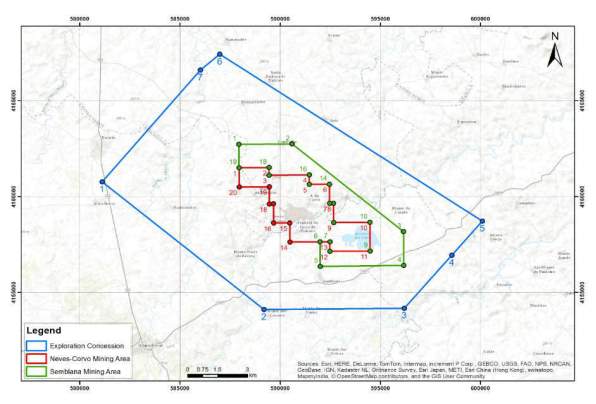
Figure 3.1 Location of Licensed Areas(Holley, 2017)
- Climate, Local Resources, Infrastructure & Physiography
4.a. Climate
The environment of the region is the semi-arid (is the climate of a region that receives precipitation below potential evaporation, but not as low as a desert climate) with an average July temperature of 23°C. The highest temperature recorded is 40°C. The average minimum temperature for the winter season is recorded as 3.8°C. Most of the rainfalls happen in the winter with an average of 426mm.
4.b. Local Resources & Infrastructure
The Neves-Corvo area in southern Portugal is well served by excellent transport facilities. It includes a dedicated railhead to the mine site, a major highway within 25km and the international airport of Faro 80km to the south.
Santa Clara reservoir is supplying fresh water to the mine via a 400mm diameter pipeline. This reservoir is approximately 40km west of the mine. Supply capacity is 600m3/hr and storage facilities close to the mine hold 30 days’ requirements. The current total freshwater requirement for the mine and plant is approximately 180m3/hr. The mine reuses 75% of this volume.
A single 150kV, 50MVA rated, overhead 22.5km long power line connects the whole mining concern with the national grid. All the necessary permits obtained by the company allow sufficient surface rights to itself to accommodate the existing mine infrastructure as well as to expand as contemplated by ZEP. The area supports truncated concentration agriculture narrowed to stock nurturing and the production of cork and olives.(PDA, 2017)
4.c. Physiography
The mine has a relatively subdued topography surrounding it. This soft phase comprises of low hills with minimal rock outcrop. The mine shaft collar is 210m above sea level.
- History
5.a. Ownership History
In 1977, following an exploration joint venture comprising exploration drilling to test some favorable gravity anomalies, mineralization at Neves-Corvo was discovered. Sociedade Mineira de Santiago (legally succeeded by EMMA –subsequently renamed EDM), Societe d’Etudes de Recherches et d’Exploitations Minieres (SEREM) and Sociétè Minière et Metallurgique de Peñarroya, S.A. (SMMP) were the companies involved in the joint venture. After the successful discovery, SOMINCOR was formed to exploit the deposits. The shareholders were EDM 51%, SMMP 24.5% and Coframines 24.5%.
In 1985, effectively forming a 49.51% joint venture with the Portuguese Government (EDM), Rio Tinto became involved in the project. This transformation in shareholding led to a reassessment of the project with ensuing first production starting from the Upper Corvo and Graça orebodies on January 01, 1989, targeting to achieve (which was completed later) 1.0Mt of throughput in that year. Total capital expenditure for the mine was around US$350M. During the progress of the mine, significant tonnages of high-grade tin ores were discovered, associated with the copper mineralization, which led to the rapid construction of a tin plant at the cost of some US$70M. The plant was specially made in 1990 and in that year some 270,000t of tin-bearing ore was treated. The railway linking to Setúbal was built between 1990-1992 to allow shipment of concentrates and the back-haul of sand for fill.
An inclined conveyor ramp linking the 700m and 550m levels were installed to access the Lower Corvo orebody in between 1992-1994. It was a significant mining deepening exercise costing US$33M. As the orebody of North Neves was also completed in 1994, a significant production tonnage added to the production.
On June 18, 2004, 100% interest in SOMINCOR was acquired by EuroZinc. Paying the consideration €128,041,000, in 2006, zinc production was commenced at Neves-Corvo through the processing by the modified tin plant.
On October 31, 2006, Lundin and EuroZinc merged, retaining the Lundin name, listing on the Toronto Stock Exchange, OMX Nordic Exchange (Stockholm) and New York Stock Exchange under the symbols of LUN, LUMI, and LMC respectively. Lundin voluntarily de-listed from the New York Stock Exchange in 2009. In June 2007, it was agreed by Silverstone Resources Corporation (Silverstone – subsequently acquired by Silver Wheaton Corporation) to acquire 100% of the life of mine payable silver production from Neves-Corvo (Area A). The mine produces approximately 0.5Moz of payable silver annually in the copper concentrate. (Holley, 2017; Wardell Armstrong International Limited, 2007)
5.b. Exploration History
From 1973 to 1984 the joint venture between the Portuguese government (EDM) (51%), SMMP (24.5%) and Conframines (24.5%) completed a total of 239 drill holes for 113,842m during the discovery stage of the project.
From 1985 to 2004 during the joint venture between Rio Tinto and EDM, a total of 3,219 drill holes for 432,393m were completed during the feasibility and mine expansion phase of the project.
On June 18, 2004, EuroZinc acquired a 100% interest in SOMINCOR. During this phase, a total of 564 drill holes for a total of 62,721m were completed.
On October 31, 2006, Lundin and EuroZinc merged, retaining the Lundin name. A total of 2,945 drill holes for a total of 805,616m have been drilled up to June 2016 by Lundin. In October 2010, surface exploration drilling focusing on a prospective area close to the Neves-Corvo mine discovered the Semblana deposit, a new high-grade, copper-rich massive sulfide deposit located 1.3km to the northeast of Zambujal. A maiden Mineral Resource estimate for Semblana was published in December 2011.
On July 25, 2012, Lundin issued a press release on the discovery of the Monte Branco deposit, located 1.2km south of Semblana and to the west of the tailings management facility. Monte Branco represented a new center of concentrated sulfide mineralization, covering approximately 250m by 200m in the area, including both massive and stock work type sulfides. Sulfides were intercepted at approximate depths of between 540m and 700m below the surface. Exploration drilling by Lundin is ongoing and the potential for discoveries is considered high. (Holley, 2017; Wardell Armstrong International Limited, 2007)
5.c. Production History
Neves-Corvo mine is actively producing copper from 1989, For the next 17 years, it has continued the production of copper as the only processed metal from the mine with a decreasing head grade and increasing the production rate.
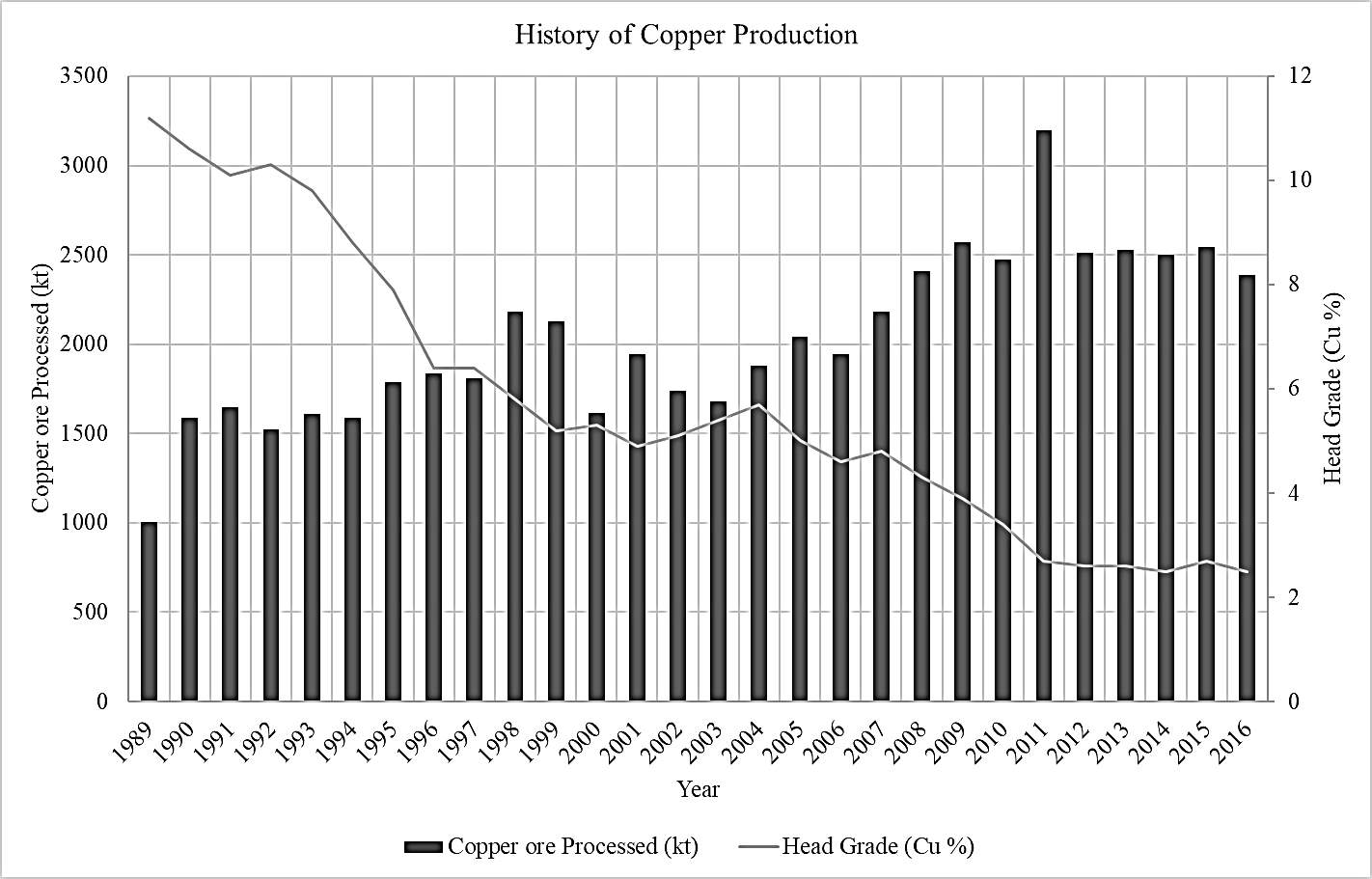
Figure 5.1 History of copper production of Neves-Corvo Mine(MacDonald, 2015)
From 2006, zinc has been added to its production list of metals permanently. From 2006 to 2016, the production rate for zinc has fluctuated rapidly.
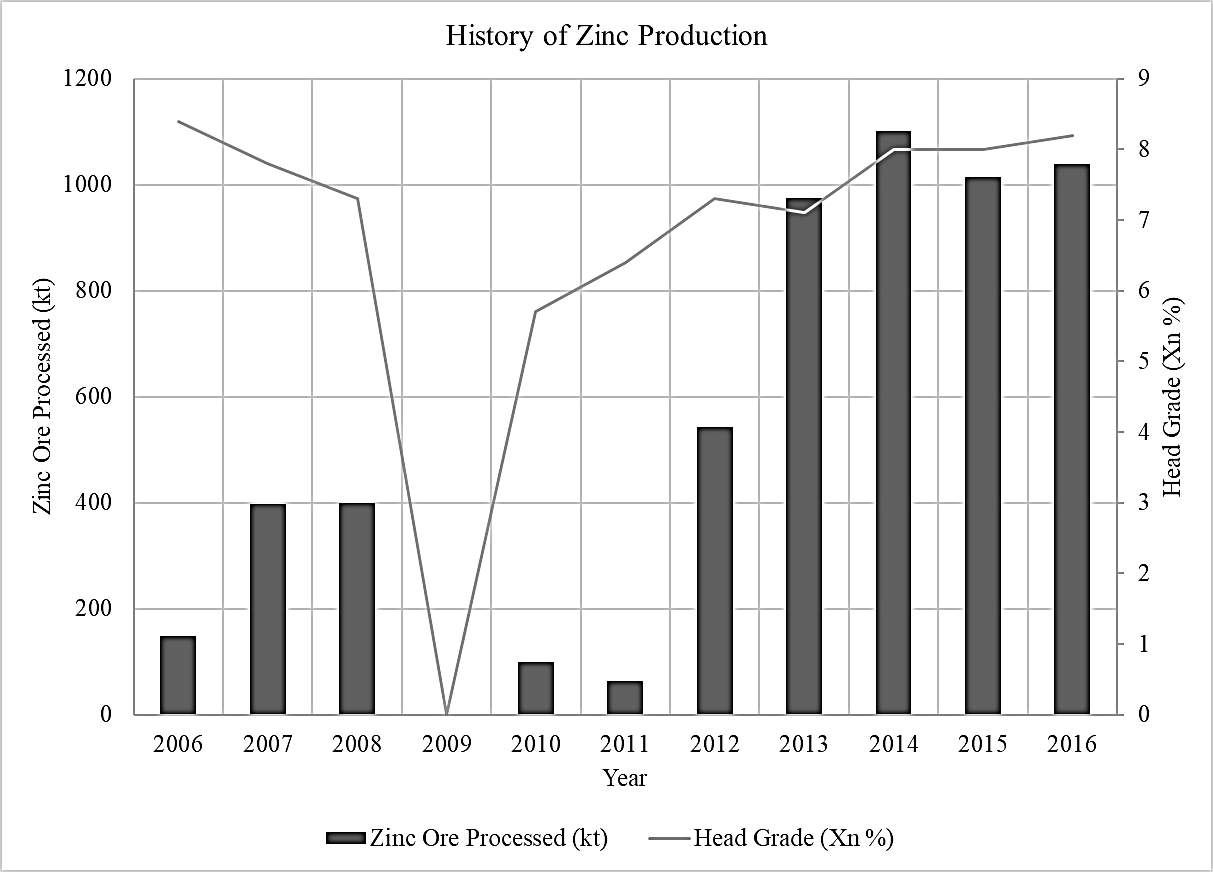
Figure 5.2 History of zinc production of Neves-Corvo Mine(MacDonald, 2015)
- Geological Setting & Mineralization
6.a. Regional Geology
The Iberian Pyrite Belt (IPB) is a vast geographical area with particular geological features that stretches along much of the south of the Iberian Peninsula, from Portugal to Spain. Being about 250 km long and 30-50 km wide, it runs northwest to southeast from Alcacer do Sal (Portugal) to Sevilla (Spain), It hoists numerous major stratiform volcano-sedimentary massive sulfide (“VMS”). It has a history of thousands of years of mining written on including the famous Rio Tinto mine, worked for gold and copper since Roman times. The Neves-Corvo mine is in the western part of this huge Iberian Pyrite Belt.
Figure 6.1 shows the location of Neves-Corvo mine within the regional geology is shown in figure 6.1.
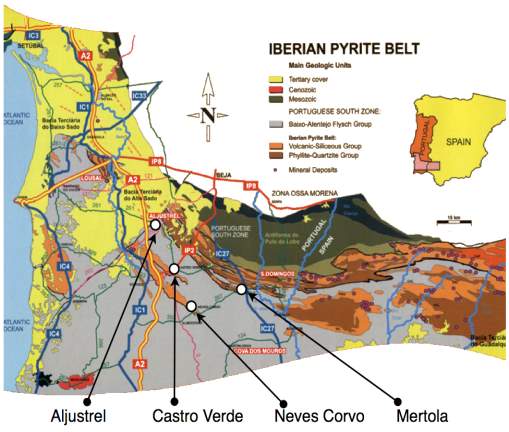
Figure 6.1 Location of Neves-Corvo mine within the regional geology
The basin where the IPB formed is located on the passive margin of the South Portuguese Zone (SPZ). Undergoing a northward oblique subduction, it later collided with the autochthonous Iberian Terrane. This particular strike-dip deformation resulted in the formation of a major volcanic belt, the IPB, within a highly compartmentalised sedimentary basin on the outermost margin of the SPZ. The north of the IPB is limited by the Pulo do Lobo Accretionary prism and the south has gone through the Baixo Alentejo Unit.
This Iberian Pyrite Belt contains several massive sulfide deposits. These deposits are interpreted as syngenetic in origin which ranges from sulfide precipitates to re-worked sulfide/silicate sediments, lying lose to acid submarine volcanic centers. Along with that, they are associated with extensive pyrite with or without chalcopyrite stockwork zones. The mineralization has been dated at 350 Ma. (Gibbons, Moreno, & Geological Society of London., 2002)
The locations of the principal VMS deposits within the Iberian Pyrite Belt are shown in Figure 6.2.
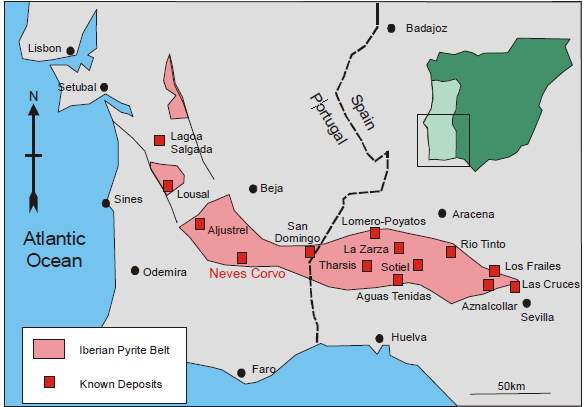
Figure 6.2 Location of Neves-Corvo other VMS Deposits within the IPB
6.b. Property Geology
The deposits of Neves-Corvo are located near the top of a dominantly volcanic sequence of the Volcanic Siliceous Complex (VSC). It consists of two chemically distinct intervals of felsic volcanic which is separated by shale units. A discontinuous black shale horizon lies just below the massive sulfide lenses. The VSC in the Neves-Corvo area has a thickness of approximately 300m.
There is an approximately 350m thick repetition of volcano-sedimentary and flysch units that overlies the mineralization there. This entire cluster has been folded into a gentle anticline which has an orientation towards northwest-southeast plunging to the southeast. It ends in formatting orebodies that are distributed on both limbs of the folds. The repetition and the thickening of the massive sulfides (in some areas up to 30m thick) are the results of the effects on the deposits by both sub-vertical and low angle thrust faults. (Holley, 2017)
The geology of the Neves-Corvo Mining Concession area is shown in Figure 6.3.
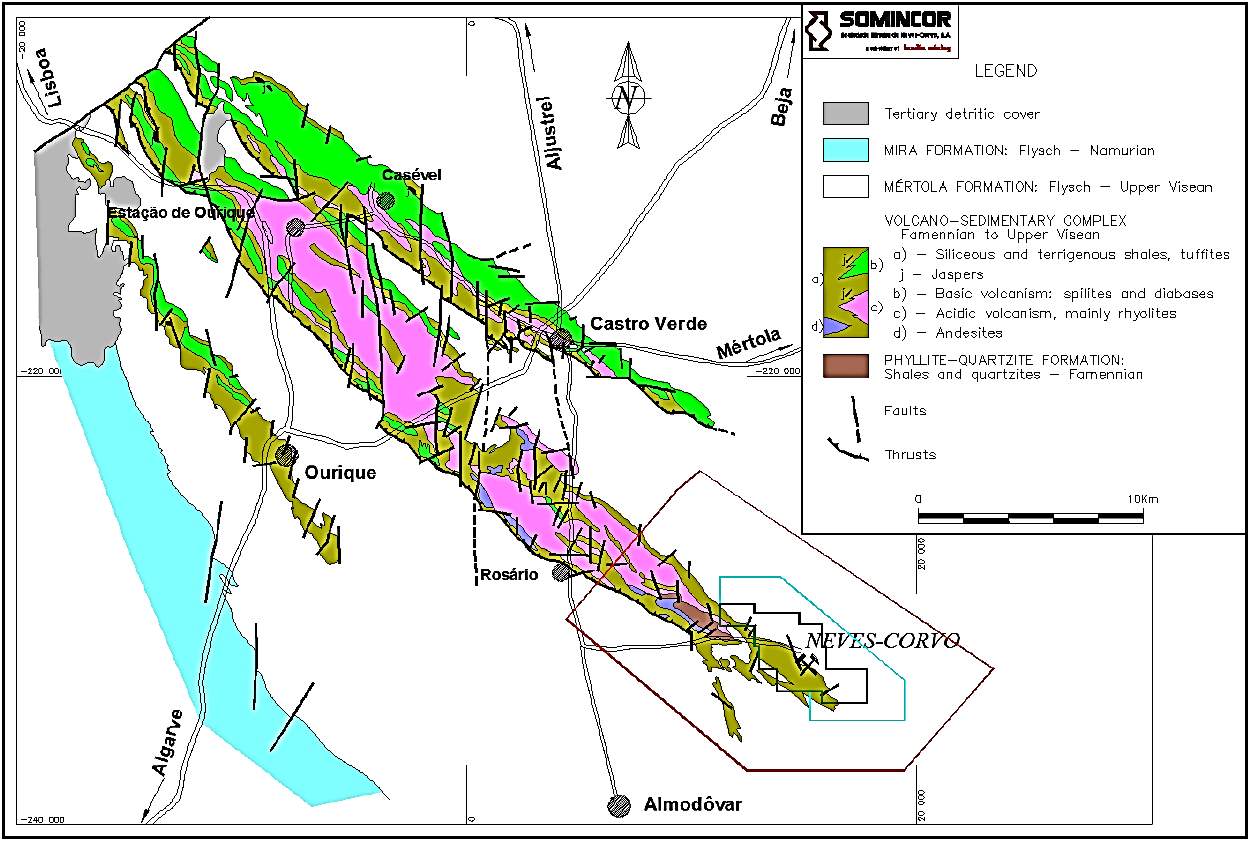
Figure 6.3 Geology of the Neves-Corvo area(Holley, 2017)
Though the deposits of Neves-Corvo are similar to the other deposits found in the Iberian Pyrite Belt (IPB) as they contain the copper, tin and zinc. But, the deposits of Neves-Corvo have a uniquely high grade and well developed strong metal zonation patterns.
The geology is consistent, and the setting is peripheral to a major submarine felsic volcanic center. The paleo-sea floor topography varies widely. The facies change abruptly. The lithological units differ highly above and below the sulfide lenses.
A stratigraphic sequence indicating the position of the mineralization in the Neves-Corvo area is shown in figure 6.4.
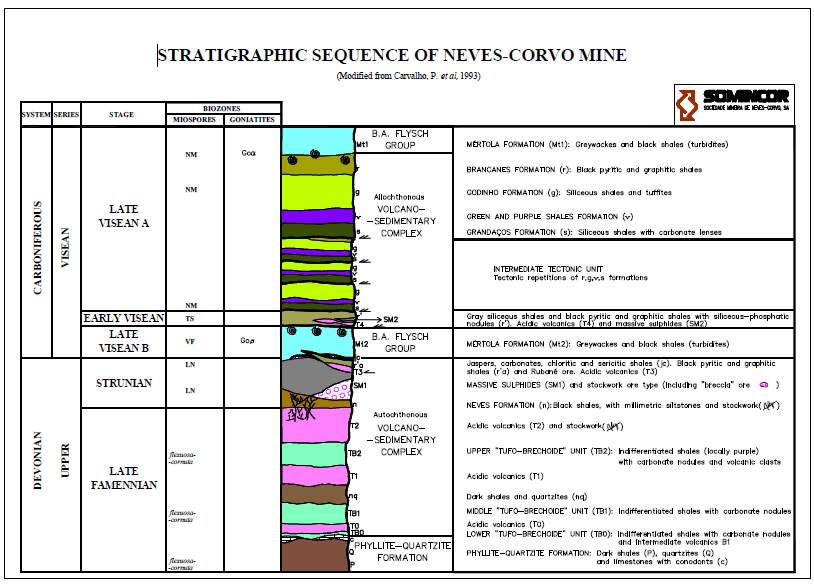
Figure 6.4 Stratigraphic Sequence of the Neves-Corvo Mine(Holley, 2017)
6.c. Overview of the mineralized zones
There are six massive sulfide mineralized zones defined; they are Neves, Corvo, Garca, Zambujal, Lombador and Monte Branco. These zones are located at depths of 230m to 1,400m below the surface and formed in an almost continuous complex volume of mineralized rock showing a large range in case of mineralization and geological structure.
Within massive sulfide pyrite lenses and copper mineralization, high-grade copper and zinc mineral deposits occur. The stockwork zones typically underlie the massive sulphide deposits. Though these deposits are generally very large, regular, continuous and predictable, the geometry of the high-grade zinc and copper zones within the deposits can be very multifaceted. It is found in many cases that the boundaries between ore grade mineralization and barren pyrite may be almost parallel to the stratigraphic contacts of the sulphide lens. The location of the mineralised zones are shown in figure 6.5.
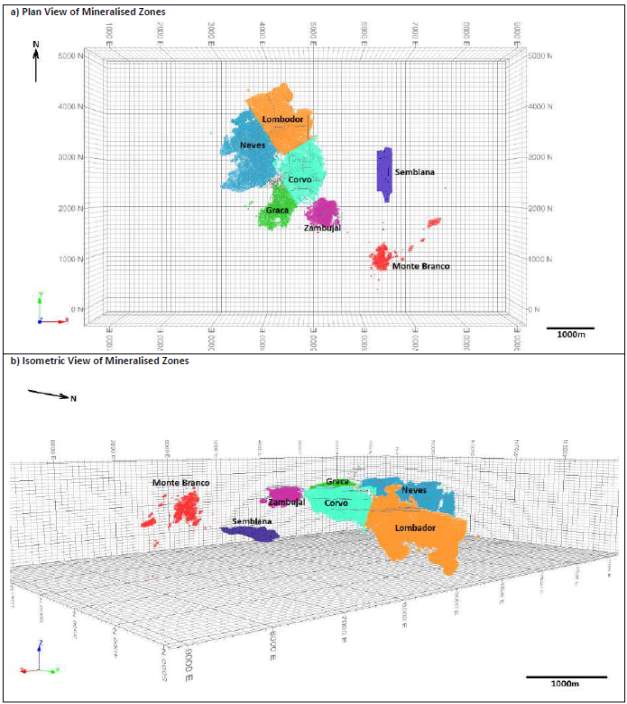
Figure 6.5 Location of Mineralised Zones at Neves-Corvo and Semblana(Holley, 2017)
- Mineral Resource & Reserve Estimates
Lundin Mining Corp. estimates and classifies the total amount of reserve and resource according to the standards provided by CIM (Canadian Institute of Mining, Metallurgy and Petroleum).
According to the CIM standards, the concentration of occurrence of any type (base, precious, industrial, etc.) of minerals in such form and quantity and of such a grade or quality that it has reasonable prospects for economic extraction is considered as a mineral resource. The part of this mineral resource for which quantity and grade or quality can be estimated based on limited sampling and geological evidence and assumed reasonably, but not verified, geological and grade continuity is considered an “Inferred Mineral Resource.” The estimation relied on limited information and sampling but gathered through appropriate techniques from locations such as outcrops, trenches, pits, workings and drill holes. When a sufficient level of confidence is added with the estimation of the inferred resource to permit the suitable application of technical and economic parameters to support production scheduling and assessment of the economic viability of the deposit, it is called the “Measured Mineral Resource.”(Reserves, 2010) Following tables show the total mineral resources for Neves-Corvo.
Table 7.1 Total Mineral Resources of Nevs-Corvo(Holley, 2017)
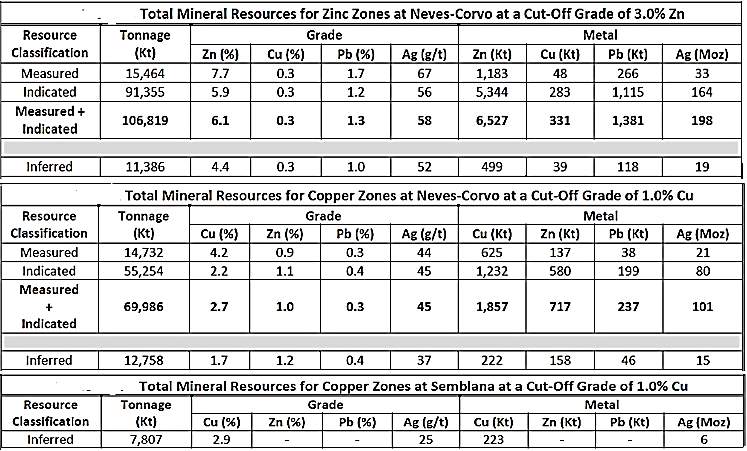
The “Mineral Reserve” is the economically mineable part of a Measured or Indicated Mineral Resource which is demonstrated by at least a Preliminary Feasibility. This study needs to have adequate information on mining, processing, metallurgical, economic and other relevant factors that describe, at the time of reporting, so that it will be possible to justify the commercial extraction. Reserves can be probable or proven. The probable ore reserve has a lower level of confidence than the proved ore reserve but contains the sufficient quality to serve as the basis for a decision on the development of deposit. A proved ore reserve includes diluting materials and allowance for looses which occur when the material is mined and represents the highest confidence category of reserve estimates. (Reserves, 2010)
Table 7.2 Estimates of Mineral Reserves of Neves-Corvo(MacDonald, 2015)
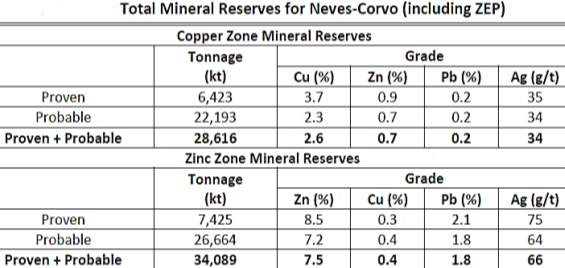
- Mining Methods
Since 1988, NvesCorvo has been operated by underground mining. The current production plan for 2017 is budgeted to be 2.4 Mt copper ore grading 2.4% Cu and 1.1 Mt zinc ore at a grade of 8.6% Zn. The mine is operated on a four-panel shift systems with three crews working Monday to Saturday and two crews working on Sunday. All the sifts are 7.5 hours in length. A total of 700 staff working in production, development services, maintenance, engineering, planning, rock mechanics, geology and exploration.
A 5m diameter circular concrete-lined shaft (600m deep) has been developed to the west of the main Corvo orebody and the main ramp to access the ramp. The underground levels (elevations) relate to a datum of 1,000m below sea level. The mine surface elevates approximately 220mASL or 1,220m above datum.
The mining methods used across the Neves-Corvo operations have been tried, tested and developed over more than 25 years of continuous mining. Most of the production comes from two mining methods and they are drift and fill and bench and fill. Throughout the operations, both methods have been adapted and tailored articulately to the large but locally complex high-grade ores.
8.a. Drift & Fill
The original mining method selected for Neves-Corvo was the Drill-and-fill method. Despite being a mining method with low productivity rates and high unit costs, it was chosen due to its high flexibility and ability to accomplish high recovery rates in high-grade orebodies with multifaceted and plane dipping geometries.
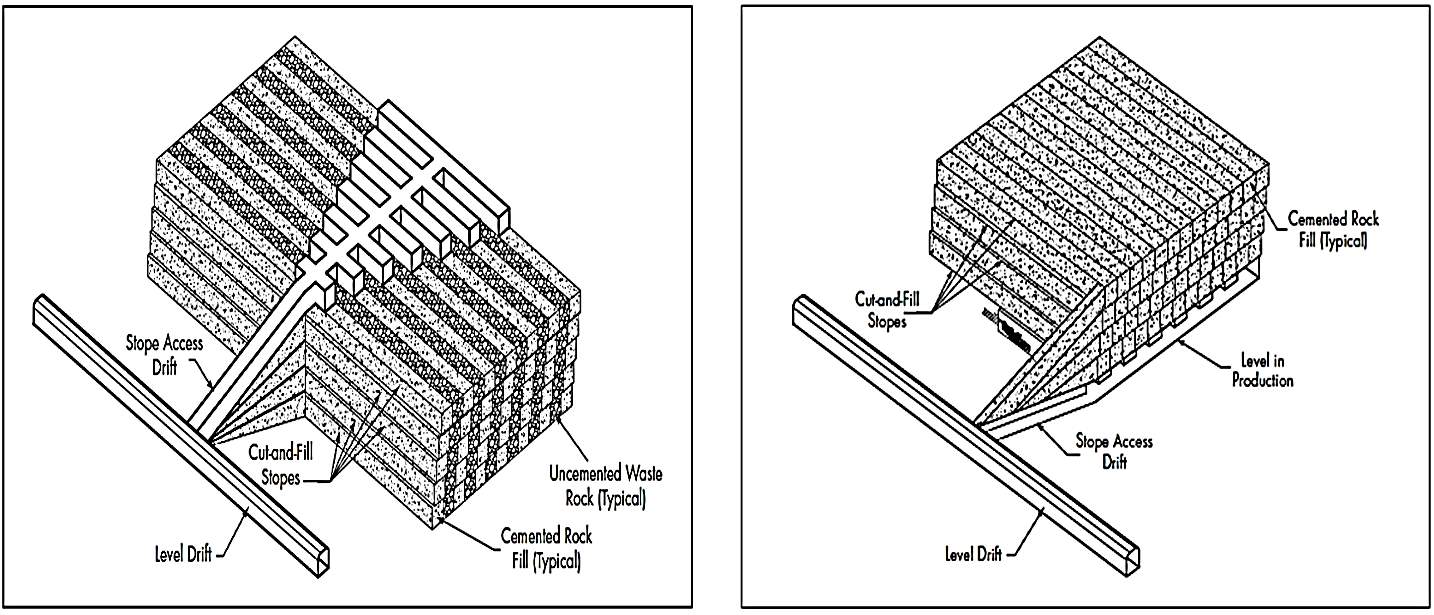
Figure 8.1 Overhand and Underhand drift & fill method (Source: SME Mining Engineering Handbook, 2013)
Drift-and-fill stopes at Neves-Corvo are retrieved from a footwall ramp with footwall access drives driven along the orebody strike at 20m vertical intervals. Access crosscuts are determined down from the footwall access drives into the orebody. Later a horizontal slice is mined using developing drifts either longitudinally or transversely in order. Usual drift sizes are 5.0m x 5.0m. Before backfilling, the sidewalls are slushed. The completion of drift is followed by tight backfill (hydraulic sand fill or Paste fill) before the drift alongside is mined. When a complete 5m high orebody slice is mined and filled, the back of the access drive is “slashed” down and mining resumes on the level above. Drift & Fill mining method applies to the areas of the mine which have a thickness of less than 10m. The mining area which has a higher thickness, bench-and-fill mining method is more suitable there. (Wardell Armstrong International Limited, 2007)
8.b. Bench & Fill
The bench-and-fill mining method has long been used at Neves-Corvo as another major mining method. It has been developed in the areas where the mineralization is of satisfactory thickness and continuity. Due to its more productivity and lower operating cost the method is preferable than drift and fill mining. In case of Neves-Corvo mine, this method is being applied when the area of the orebody has a vertical thickness of more than 20m. Like Drift & Fill method, Bench-and-fill stopes are also accessed from a footwall ramp, with footwall drives that are driven along strike in waste at 20m vertical intermissions. Upper and lower access crosscuts are driven across the orebody to the hanging wall contact, as shown in Figure 8.2.
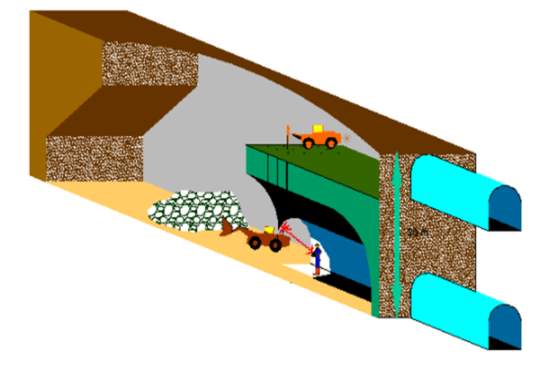
Figure 8.2 Bench & Fill Mining Method (Schematic)(Wardell Armstrong International Limited, 2007)
After establishing the primary stope development, the top access is opened to the full stope width (usually 12m) and the slot raise also widened to full stope width. Fully-grouted and tensioned cable bolts and 100mm of wet-sprayed concrete are used to provide the support to the top access. Drilling the stopes with rings of 15m long, 105mm diameter vertical blast holes from the top access to the floor level of the bottom access or breaching through where they criss-cross the bottom access. Blasting is initiated from the beginning of the hanging wall slot raise and continued up to the footwall. Remote-controlled LHD (Load Haul Dump) vehicles are used to muck the ore from the bottom access. From LHD the ore is trimmed directly to ore passes located on the footwall drive. In case of unavailability of a convenient ore pass, 40t mine trucks are used to load the ore for hauling to the nearest crusher or orepass.
Each stoping panel is decorated with substitute primary and secondary stopes. The secondary stopes are mined only after backfilling the primary stopes with the proper filling method. Bench & Fill stopes can be up to 120m in length depending on the circumstances of the mining areas. (Wardell Armstrong International Limited, 2007)
8.c. Mini Bench and Fill
Mini Bench & Fill is a modified form of Drift & Fill mining method. It has greater productivity and is developed where the orebody has 8-15m of vertical thickness. However, some selectivity in some cases is still required. Like the methods mentioned above, stopes are accessed from a footwall ramp, with footwall drives that are driven along strike in waste at 20m vertical intermissions. Crosscuts are mined from the footwall drive to establish the contact with hanging wall. (Wardell Armstrong International Limited, 2007)
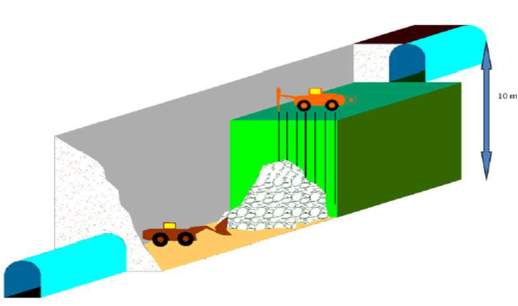
Figure 8.3 Mini Bench & Fill Mining Method (Schematic)
Keeping the two sets of crosscuts vertically apart by 5-10m from each other, drilling and mucking are conducted on different levels in a similar manner to Bench & Fill. However, the scale is smaller than the Bench & Fill method. Contrasting Bench & Fill, Mini Bench stopes are sometimes mined along strike. 5m x 5m drifts are mined from the upper cross-cuts to the footwall contact analogously, till they reach the back of the lower crosscut (usually 40m). The operation followed by the breakthroughs to form a draw point. Vertical holes are then drilled and blasted in retreat from the drawpoint back towards the upper crosscut. Remote-controlled LHD (Load Haul Dump) vehicles are used to muck the ore from the bottom access. Primary and secondary stopes are located adjacent to each other (generally 10m apart). Like the Bench and Filling method, the secondary stopes are mined only after backfilling the primary stopes with the proper filling method.
8.d. Sill Pillar
Sill Pillar is a modified version of Room & Pillar mining method. This method is being used to extract 20m thick sill pillars which are left in between the panels and covering backfill. Developing a bottom crosscut throughout the ore to the hanging wall is the initial stage of this method. Cable bolts and shotcrete reinforcement provide support to the excavation through to the overlying backfill. After that, driving drifts or rooms along strike of the access crosscut makes this method analogical with the Drift and Fill method. The final slice which is just beneath the backfill is mined in two stages. Primarily, one slice of 5m and finally one slice of 3m is removed. A slinger truck is employed to backfill the final slash rapidly after making it slashed off. The target is to fill it as tightly as possible. It is possible to make overall 95% ore recovery by using this method. (Wardell Armstrong International Limited, 2007)
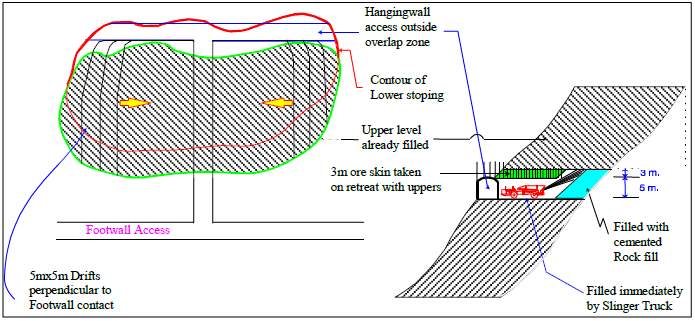
Figure 8.4 Sill Pillar Mining Method (Schematic)(Holley, 2017)
8.e. Optimized Bench & Fill
The Optimized Bench and Fill method is used to make a bottom to up extraction where the transverse stopes are utilized and accessed from footwall ramps and crosscuts. Like the previously mentioned methods, extraction is started initially on the primary stopes then continued to the secondary stopes after backfilling the primary ones. The secondary stopes are formed between the stopes which are previously mined and the stopes which filled primarily. The length of the primary and secondary stopes varies depending on the width of the orebody while they have a pretty much-fixed width (15m) and height (20m). Figure 8.5. Shows the schematics of the extraction from the primary and secondary stopes before starting the production on the next level above them. (Wardell Armstrong International Limited, 2007)
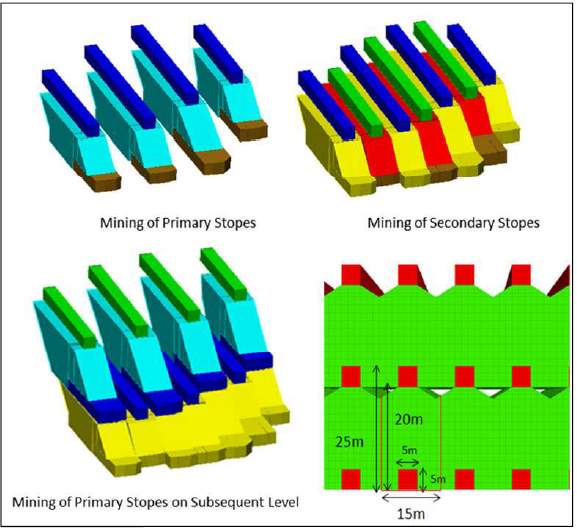
Figure 8.5 Optimized Bench-and-Fill Mining Method(Holley, 2017)
8.f. Backfill
For backfilling the mine mainly depends on two main types of backfill, which are hydraulic and paste fill.
- Hydraulic Fill
Imported aeolian sand, cyclone tailings and cement are the primary materials used in case of hydraulic filling. It was the primary filling technique used in the mine for many years from the beginning and still preferred in the Drill and Fill stopes. However, paste filling has replaced this method in case of Bench and Fill Stopes.
A surface plant was built and is still in operation to prepare and transport the hydraulic fill to the underground guided by the gravitational force. A series of boreholes are drilled from surface and the distribution is carried out to stopes by 150mm diameter steel pipes. Mixing 96% sand, 1% tailings and 3% cement by weight solids give the standard mixture for hydraulic filling. It takes as early as 72 hours to initiate the mining in the adjacent where filling is poured. After 28 days placement, the full strength is achieved and the unconfined compressive strength ranges from 0.5 to 1.0 MPa. Because of the uniform grain size of the aeolian sand, the cement washes out easily of the fill during placement. This results in having lower strength along with additional dilution at the time of exposure through mining in the adjacent stopes. Causing wear to the mine pumps because of its high cement content makes it difficult to manage. In summary, it has lower efficiency comparing paste filling.
- Paste Fill
The active surface plant was built in 1999 to solve the issues associated with hydraulic fill and utilize the tailings in a better way. According to the design, the plant has an annual capacity of 350,000m3 but current production is 220,000 m3 per year. At the running phase, the placement rate can be up to 90 m3 per hour. The plant can operate 24×7 at the stope filling cycle until the filling operation completes.
The paste fill mix varies with the type of stopes (primary/secondary) and Bench and Mini Bench stopes. Generally, a mixture containing 95% cyclone tailings and 5% cement is used to do paste filling in the primary stopes. In case of secondary, the concentration of tailings is increased to 99% and the cement is decreased to 1%. Containing 80% solids, the paste mix has a slump size of 19-22cm. In case of operations at the Corvo area the filling operation doesn’t include pumping, rather depends on the gravity of transportation. A positive displacement pump is used while filling is done on the Neves area.
The advantages of paste filling are:
- Better usage of the tailings
- Better cement content / strength ratio
- No need to use imported sand
- No bleeding of water during displacement
The disadvantages of the paste filling in case of Neves-Corvo mining operation are:
- It cannot fill the zone tightly
- A positive displacement booster pump is required to get the projected efficiency.
Table 8.1 shows the selection basis of the various backfilling methods in Neves-Corvo mine:
Table 8.1 Backfill Specification by Mining Method(MacDonald, 2015)

Figure 8.6. shows the forecasted requirements of backfill in the Neves-Corvo operation:
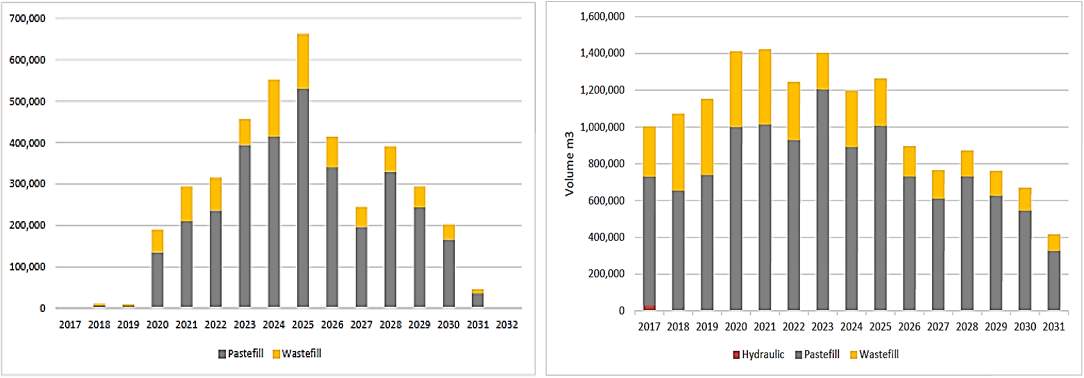
Figure 8.6 Annual Backfill Requirements
8.g. Ventilation
The ventilation network of the Neves-Corvo is a very complex and extensive network which comprises six existing ventilation districts along with two planned districts. All the ventilation zones are summarized in table 8. (Holley, 2017)
Table 8.2 Ventilation Districts of Neves-Corvo Mine
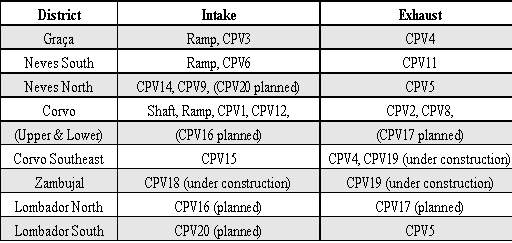
Figure 8.7. shows how the intake and exhaust fans are being used to supply the necessary amount of air to the underground. The green and red rectangles indicate the intake and the exhaust respectively.
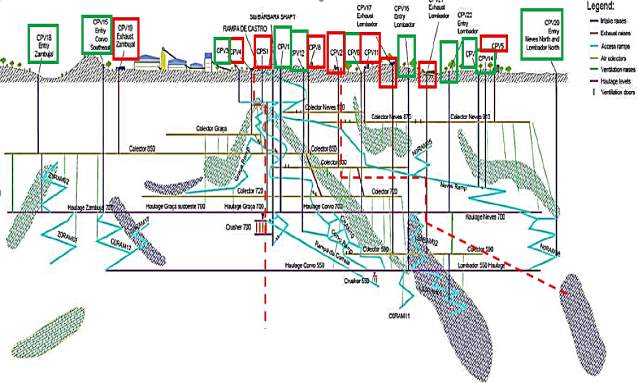
Figure 8.7 The ventilation network for Neves-Corvo mine
Though the current required airflow for the mine is 880m3/s, it can supply 1,060 m3/s of air. The mine has a push-pull, flow-through system which is maintained primary fans on the surface and auxiliary fans with the ducting underground. The fans are facilitated with the capacity to adjust according to the requirement.
- Environmental, Social & Community Management
The company is doing a recommendable job in case of handling environmental regulations along with supporting the community nearby. The following points contain some the examples of its performance in this sector.
- The company has been taking steps to manage it’s energy usage more efficiency more efficiently by installing reactive power compensation system at the zinc plant, air compression leakage detection, avoiding compressed air in the underground mining, improving ventilation control during the changes of shifts, replacing current belt drive with high-efficient ones, replacing fluorescent light and sodium vapour with LED lighting across the mine site, etc. All these steps are contributing the mine to be more energy efficient and the amount of greenhouse gases is also decreasing.
- The mine actively runs an environmental monitoring system in the mine-site. This EMS system helps them to keep track of every single waste they’re generating and how they’re handling. It enables a sustainable waste management system on the site.
- The area where the mining operations are being done has been declared as an area of biodiversity. In the EIA studies of the last year, over 300 species were characterized. It was anticipated that the Zinc Expansion Project could potentially impact flora and fauna of the area. Making this issue as one of the top priorities, the company engaged a monitoring cell to study, overview and report the impact. (PDA, 2017)
- An air monitoring cell has been established 2km away from the mine-site to monitor the quality of the air. In recent years, there was an increase found in the dust level of the air. Then a dust mitigation program was taken by the company and now the dust level has decreased to the normal level.
- Noise and vibration are the potential impacts of almost every mining project. But, fortunately, due to the location of the Neves-Corvo mine, the noise and vibration don’t have any potential impacts on the surroundings. (Holley, 2017)
- 40 objects in the mining concession zone were marked as cultural heritage while receiving a permit for mining from the environmental authority. The company seems to be respectful regarding this issue until they expand their new project related to zinc extraction. They are considering mitigation plans not to have any effect on the archeological and cultural heritages. (PDA, 2017)
- The company has been actively involved in improving the socio-economic status of the area where the mining concession stands. Following are some examples of their socio-economical activities:
- Blood-donating campaign
- Training programs for the locals and recruiting from the trained ones
- Building schools, community centers
- Creating and spending additional budget to improve the education and wellness of the local community
- Local supplier development
- Safety initiatives during an emergency
- Sustainable agricultural practices
- Regular meeting with the community members and stake-holders
- Safety Management
Lundin Mining Corp. has a good reputation in case of providing a safe, healthy, working environment, especially in Neves-Corvo mine. The fully equipped mine safety department is staffed sufficiently to meet the guidelines provided by the US OSHA. Due to the confidentiality purpose, the most recent safety reports were not available for the public. Though the most available report is from 2011, it still proves the company’s dedication towards safety, specifically in this mine.
The company tracks all the incidents that cause lost time from work or which require medical aid. This ‘Total Recordable Incident” frequency allows comparing their performance between operations in different parts of the world regardless different social support system or workers compensation requirements. This has helped them to decrease the Lost Time Injury rate by 75% per 200,000 hours worked.
These are the key steps taken by the company to ensure the highest safety in the mine:
- Increasing awareness among the worker
- Motivate the workers to report the injuries without fearing
- High level of awareness among the supervisors
- The visible commitment of the managers
- Introduction of the SMAT – Safety Management Auditing Techniques
- Encouraging the workers to do written risk assessments of every task and carry out post-incident investigations
- Regular publication of weekly, monthly and yearly Safety Newsletters to keep the workforce and management informed of all Safety related matters
- Safety bonus scheme in operation
- A well-equipped mine rescue station
- Establishing a mine hospital
Figure 10.1. & 10.2. show the Total Recordable Incident Frequency (TRIF) and Lost Time Injury Frequency (LTIF) of different mines operated by Lundin Mining:
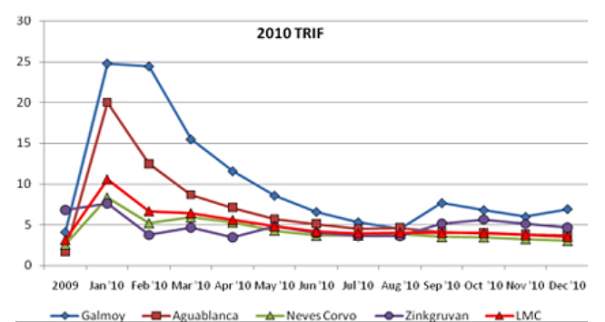
Figure 10.1 TRIF records of different mines of Lundin Mining
It is evident that the number of Total Recordable Incidents has a decreasing pattern among all the other mines and this is a good sign for the mine. The same model is also visible in case of Lost Time Injury Frequency.
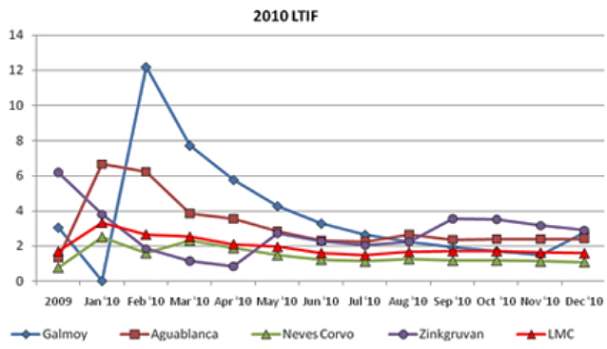
Figure 10.2 LTIF records of different mines of Lundin Mining
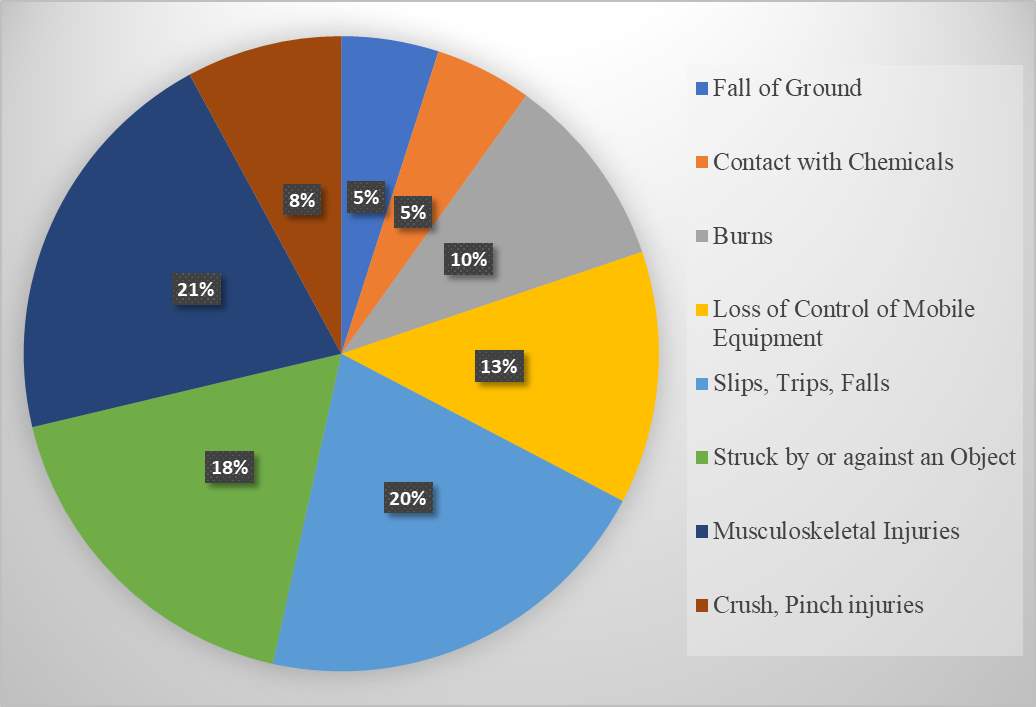
Figure 10.3 Types of incidents in Neves-Corvo mine
Figure 10.3. shows the types of various incidents and their percentages. It’s clear that the mine hasn’t met any serious accident in recent years.
Efforts were created to originate a culture of the amendment at the sites that will establish an associate atmosphere that will drive improved safety performance. Following the idea, at Neves-Corvo, good enhancements are made to mine- site infrastructure to boost safety as like productivity. The mine is moving from ANFO to emulsions explosives, which have a less environmental impact and are easier to handle. Secured storage facilities are made underground that is straightforward to keep up and is well lighted.
A campaign on tidiness and mine-site improvement have redrafted the surface and underground areas at Neves-Corvo. This concerned enhancements to lay-down and workshop spaces for contractors and clean-up of the stockpile area for explosives handling, shotcrete combination, transportation into the mine and traffic flow within the mine. (Lundin Mining, Health and Safety)
- Economic Analysis
The mine has a good track record of making a stable profit. Wardell Armstrong International Limited has done an economic analysis on overall the project, especially on the new ZEP. According to the study the forecasted cash flow is tabulated in Table 11.1 considering the exchange rate of USD$ 0.8333. According to the report, the unit cost is forecasted to improve slightly from 2017. Assuming a Zn by-product credit priced at $1.30/lb, the forecasted cash cost will also be the same.
Table 11.1 Forecasting of the cost of Neves-Corvo operation(MacDonald, 2015)
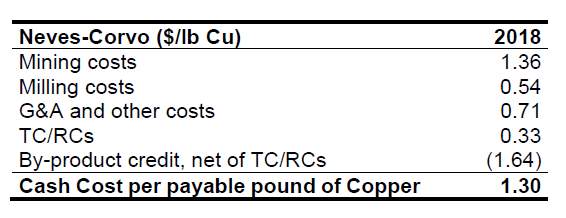
Table 11.2 shows the forecasting of the Zinc Expansion Project (ZEP) for the year 2018. Figure 11.1. shows the sensitivity analysis of the project from where it is understandable that this is going to be a valuable expansion of the project.
Table 11.2 Forecasting of the cost of Neves-Corvo (ZEP) operation(MacDonald, 2015)
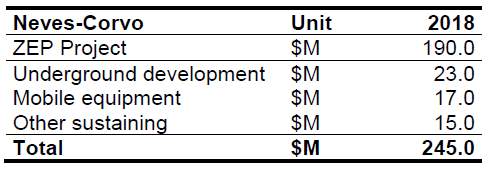
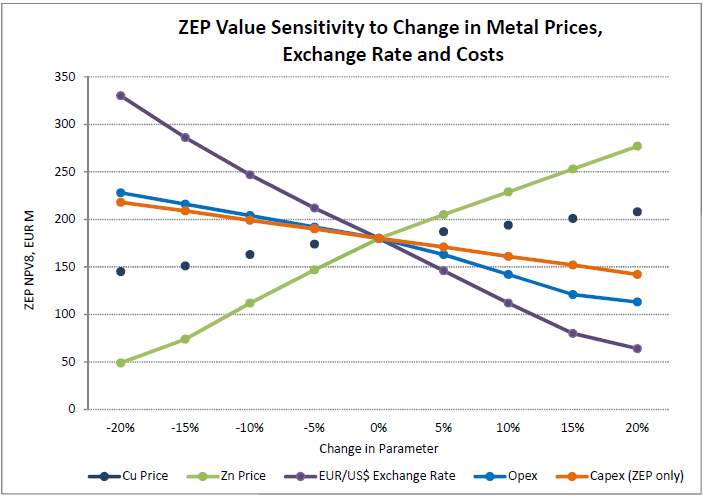
Figure 11.1 Sensitivity analysis of the ZEP Project(MacDonald, 2015)
- Conclusion
Neves-Corvo is an important operation for Lundin Mining as well as the mining history of Portugal. This is one of the oldest mines in which is still in operation and opted to be in the production for a long time from now. It has been operating for a long time without having any significant issues in case of operation, community or environmental management. The strategy of the company regarding the operations of this mine can be an example or a matter of study for the students of mining.
- Reference
Facts, K., & Description, P. (2016). Neves-Corvo Mine, 1–5.
Gibbons, W., Moreno, T. (Geologist), & Geological Society of London. (2002). The geology of Spain. Geological Society. https://doi.org/10.1144/GOSPP
Holley, S. (2017). LUNDIN MINING NI 43-101 TECHNICAL REPORT FOR THE NEVES-CORVO MINE, PORTUGAL June 2017, (June).
MacDonald, D. and A. L. (2015). Annual Information Form for the Year Ended December 31, 2014, 2015(10/01), 66. Retrieved from http://www.sedar.com/GetFile.do?lang=EN&docClass=1&issuerNo=00014148&fileName=/csfsprod/data150/filings/02311978/00000001/C%3A%5CFilings%5CDJS%5CMDA%5CAnnualYE2014%5CAIF_YE2014_MDA.pdf
PDA, G. (2017). Environmental Impact Assessment: Zinc Expansion Project.
Reserves, M. (2010). Cim definition standards -, 1–10. Retrieved from http://web.cim.org/standards/menupage.cfm?sections=177&menu=178
Safety -Neves-Corvo.pdf. (n.d.).
Wardell Armstrong International Limited. (2007). Lundin Mining Corporation: Exhibit 99.1 – Prepared by TNT Filings Inc. Retrieved April 15, 2018, from https://www.sec.gov/Archives/edgar/containers/fix270/1377085/000120445907001642/lundintechrep.htm
Cite This Work
To export a reference to this article please select a referencing stye below:
Related Services
View allRelated Content
All TagsContent relating to: "Geology"
Geology is an “Earth science” or “geoscience” concerned with the study of the physical structure of the Earth (or other planetary body) and the rocks of which it is made, the processes that shaped it and its physical, chemical and biological changes over time.
Related Articles
DMCA / Removal Request
If you are the original writer of this dissertation and no longer wish to have your work published on the UKDiss.com website then please:




